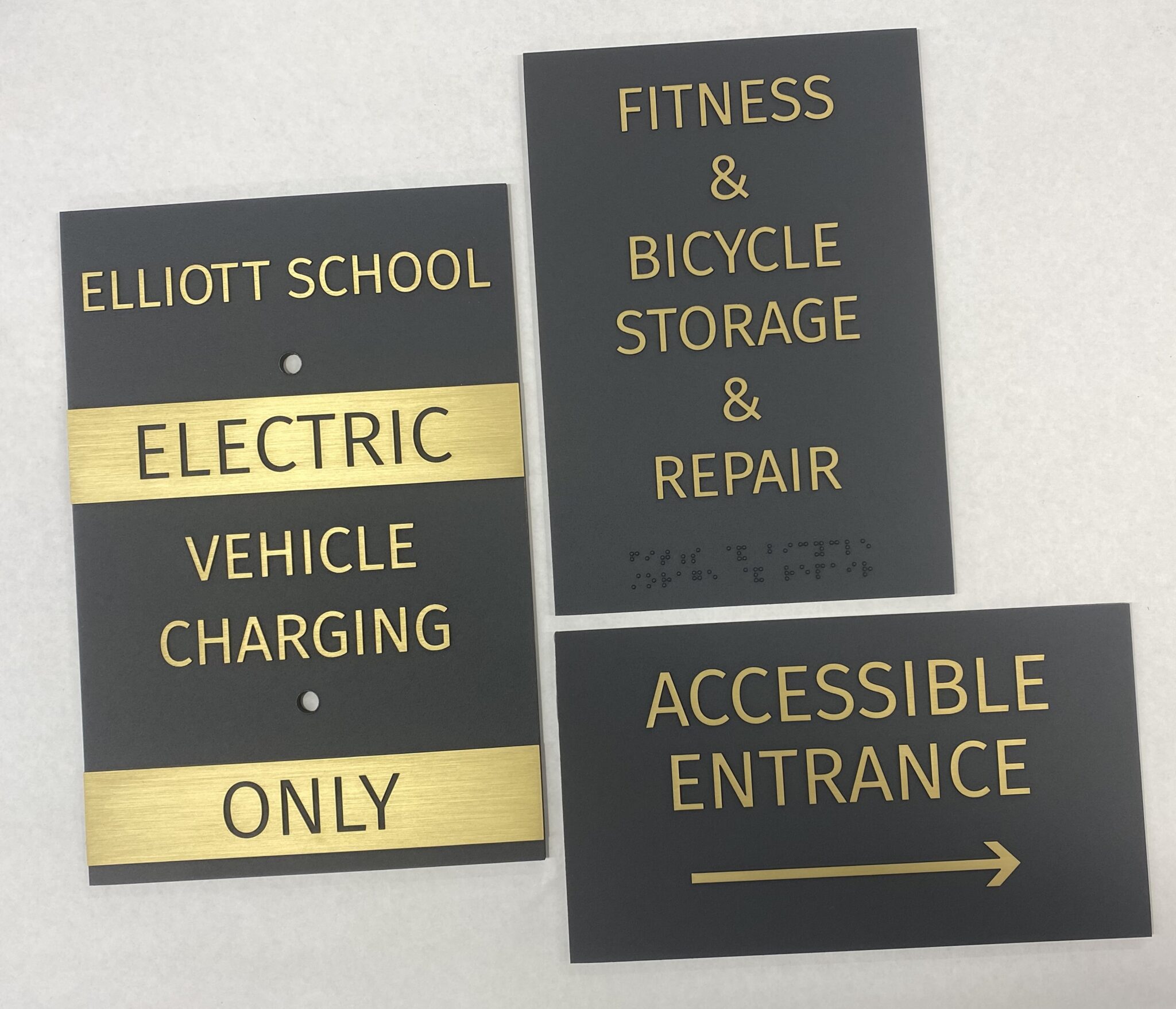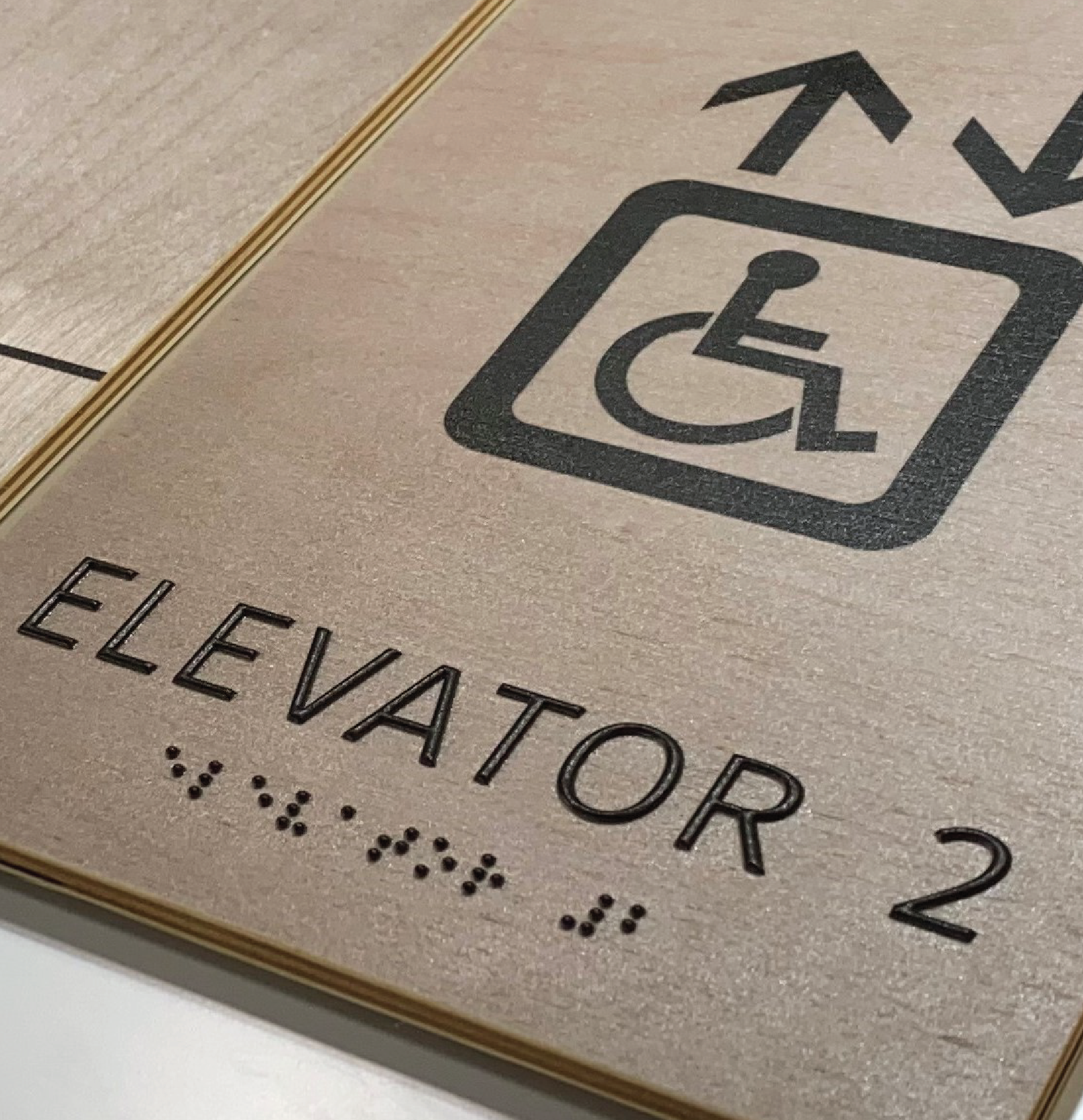Discover the Importance of ADA Signs in Public Spaces
Discover the Importance of ADA Signs in Public Spaces
Blog Article
Checking Out the Key Functions of ADA Indicators for Boosted Availability
In the world of availability, ADA signs serve as quiet yet powerful allies, making sure that spaces are navigable and comprehensive for people with impairments. By incorporating Braille and responsive elements, these indications damage barriers for the visually damaged, while high-contrast shade schemes and readable typefaces provide to diverse visual requirements.
Relevance of ADA Compliance
Making sure conformity with the Americans with Disabilities Act (ADA) is important for cultivating inclusivity and equal access in public areas and offices. The ADA, established in 1990, mandates that all public facilities, employers, and transportation solutions suit people with disabilities, ensuring they delight in the exact same civil liberties and possibilities as others. Compliance with ADA standards not only satisfies lawful commitments but likewise improves a company's track record by demonstrating its dedication to diversity and inclusivity.
One of the essential elements of ADA compliance is the application of easily accessible signs. ADA indications are created to make sure that people with handicaps can conveniently browse with structures and areas. These signs must follow specific standards pertaining to dimension, font style, color contrast, and placement to assure presence and readability for all. Effectively carried out ADA signs assists eliminate barriers that individuals with specials needs commonly come across, consequently promoting their independence and self-confidence (ADA Signs).
In addition, sticking to ADA guidelines can reduce the danger of possible fines and legal repercussions. Organizations that fall short to follow ADA guidelines might face fines or lawsuits, which can be both monetarily difficult and damaging to their public image. Therefore, ADA compliance is important to fostering an equitable setting for everybody.
Braille and Tactile Components
The consolidation of Braille and responsive elements into ADA signs embodies the concepts of ease of access and inclusivity. These attributes are important for people who are visually impaired or blind, allowing them to browse public spaces with higher freedom and confidence. Braille, a tactile writing system, is crucial in providing composed details in a format that can be conveniently viewed through touch. It is commonly placed under the corresponding message on signs to make certain that people can access the details without visual support.
Tactile elements expand past Braille and include raised icons and personalities. These elements are made to be noticeable by touch, enabling individuals to identify area numbers, bathrooms, leaves, and various other important areas. The ADA sets specific guidelines concerning the size, spacing, and positioning of these responsive elements to optimize readability and ensure uniformity across different settings.

High-Contrast Color Systems
High-contrast color pattern play an essential role in boosting the visibility and readability of ADA signs for individuals with aesthetic problems. These systems are necessary as they optimize the difference in light reflectance in between text and background, guaranteeing that indicators are More Info quickly noticeable, even from a distance. The Americans with Disabilities Act (ADA) mandates the use of specific color contrasts to suit those with limited vision, making it a crucial aspect of conformity.
The efficacy of high-contrast colors hinges on their ability to stand out in numerous illumination problems, including dimly lit settings and locations with glare. Typically, dark text on a light history or light message on a dark background is employed to attain optimal contrast. Black text on a yellow or white history provides a stark aesthetic distinction that aids in quick acknowledgment and understanding.

Legible Fonts and Text Dimension
When thinking about the style of ADA signage, the choice of understandable typefaces and suitable text size can not be overemphasized. The Americans with Disabilities Act (ADA) mandates that font styles should be sans-serif and not italic, oblique, script, highly decorative, or of uncommon type.
The size of the text likewise plays an essential function in ease of access. According to ADA standards, the minimal text elevation need to be 5/8 inch, and it needs to raise proportionally with viewing range. This is especially essential in public get redirected here rooms where signage needs to be reviewed swiftly and properly. Consistency in message dimension adds to a cohesive visual experience, assisting individuals in browsing settings effectively.
Furthermore, spacing between lines and letters is integral to clarity. Adequate spacing protects against characters from appearing crowded, boosting readability. By adhering to these requirements, developers can substantially improve accessibility, ensuring that signage offers its intended function for all people, despite their aesthetic capabilities.
Efficient Positioning Strategies
Strategic placement of ADA signs is essential for making the most of ease of access and guaranteeing compliance with lawful criteria. ADA standards stipulate Go Here that signs should be placed at an elevation between 48 to 60 inches from the ground to ensure they are within the line of view for both standing and seated people.
Furthermore, signs must be positioned beside the latch side of doors to permit simple identification prior to entrance. This placement aids people locate areas and areas without obstruction. In instances where there is no door, indications ought to be positioned on the nearby nearby wall surface. Uniformity in sign positioning throughout a facility boosts predictability, minimizing confusion and boosting general user experience.

Conclusion
ADA signs play an essential function in advertising accessibility by integrating functions that attend to the demands of people with specials needs. Integrating Braille and tactile aspects makes certain crucial info comes to the visually impaired, while high-contrast color pattern and legible sans-serif fonts improve exposure throughout numerous lights conditions. Effective placement techniques, such as proper placing elevations and critical areas, even more assist in navigating. These components jointly cultivate a comprehensive environment, underscoring the significance of ADA compliance in making sure equivalent gain access to for all.
In the realm of accessibility, ADA signs serve as quiet yet powerful allies, ensuring that spaces are comprehensive and navigable for people with disabilities. The ADA, enacted in 1990, mandates that all public centers, employers, and transport solutions suit individuals with impairments, guaranteeing they appreciate the exact same rights and possibilities as others. ADA Signs. ADA indications are developed to ensure that people with impairments can easily browse through spaces and structures. ADA guidelines state that signs need to be installed at a height between 48 to 60 inches from the ground to guarantee they are within the line of sight for both standing and seated people.ADA indications play an essential function in advertising availability by integrating functions that address the requirements of individuals with specials needs
Report this page